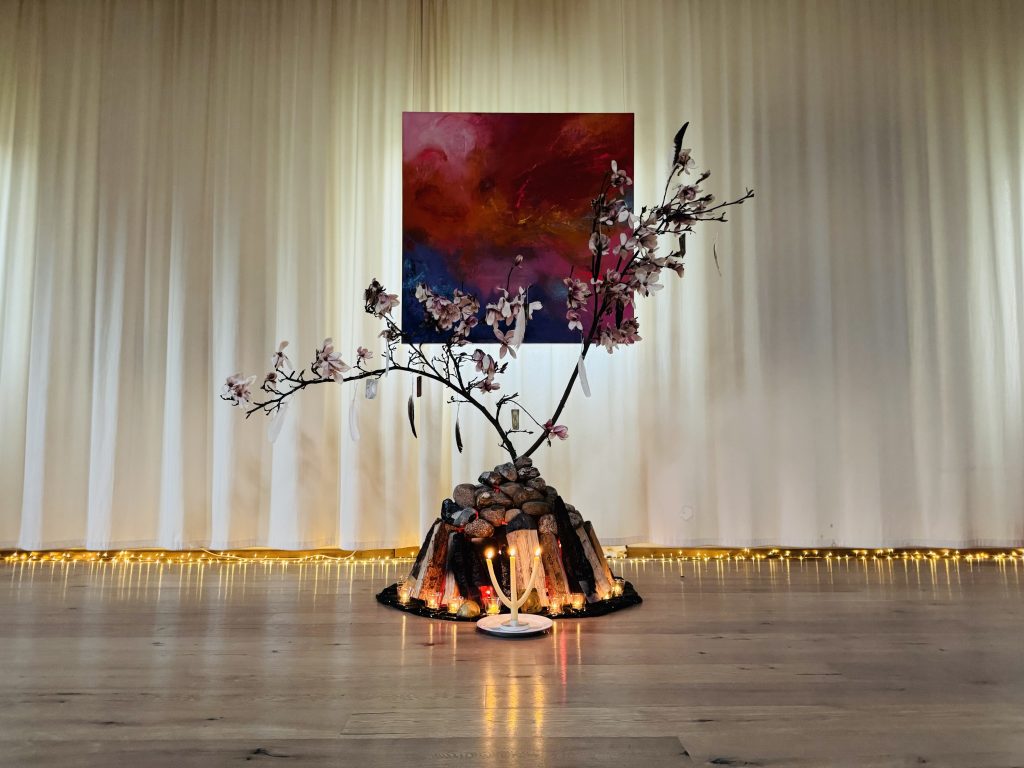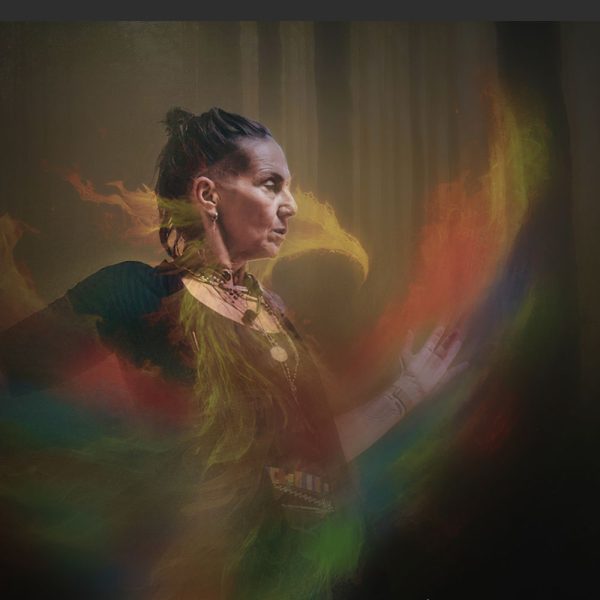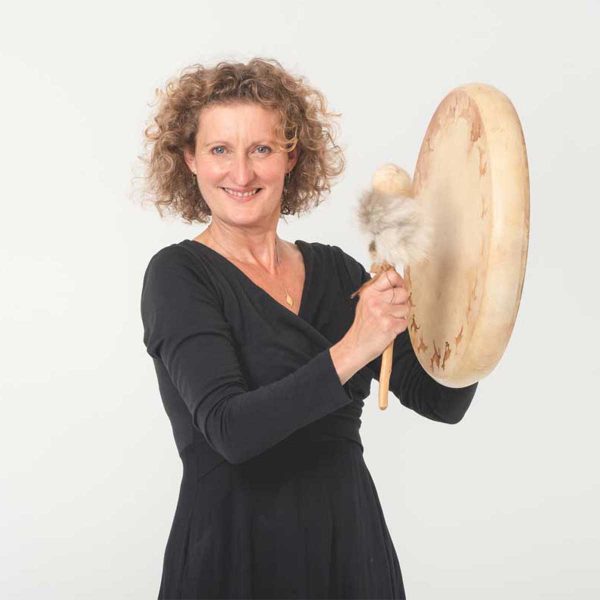Our Movement Medicine phoenix work is born from our conviction, experience and prayer that we humans are capable of rising from the ashes of our suffering to tell a new story. Given enough resources of safety, love, compassion, skill and intention, we can bring balm to the wounds that, untended, simply go on (often unconsciously) turning the wheel of pain through the generations.
In the Phoenix process we work with our patterns and stories which in Movement Medicine we call ‘understudies’. In the Phoenix Process Ya'Acov and I have brought together relevant aspects of healing methodologies we are deeply soaked within, including Gestalt Psychotherapy, Family Constellations, shamanic practice and Gabrielle Roth's approach to working with the ego. When we created this in 2007, our aim was to create a compassionate and effective way of working with the roots of our stories about who we are, what our place is in this world and what is possible. As the years have gone by, the process has become more and more refined, precise and effective.
In the Phoenix Process we are working with different methods to become a conscious witness of our own ‘default modes’, which have been described variously as: character structures (Wilhelm Reich), egos (Gabrielle Roth in her ‘Mirrors’ work), SPASMs (the Self’s Protective Adaptive Survival Mechanism) and understudies (SPASMs and understudies - Movement Medicine).
When we talk about the "story of the understudy" we are talking about stuck patterns and beliefs which have become normalised, self perpetuating and often invisible through repetition, sometimes for years or decades and often for generations. These stories have a real habit of becoming self confirming loops.
What powers these loops is the power of our own unconscious behaviour. This behaviour is all the more powerful for being right out of our consciousness and invisible to us. It emerges from how we (again unconsciously) filter and interpret what is "out there". This perception creates feelings which become unconscious behaviours which tends to elicit the response from the world which confirms our implicit story: "So you see? It really is like this!" Witnessing these loops with honesty and compassion is a first step to liberating their apparent inevitably. We call these repeating loops "the dance of the understudy".
A caveat is necessary here. We are not saying that everything that happens to someone is a result of their own stories. Not at all. This can lead to a "blaming the victim" scenario which adds insult to injury, is not real and does not help. There are currents in the world which we have no control over - events and situations which are much bigger than any individual's story, perception, interpretation or behaviour. We are not omnipotent. At the same time, we are more powerful than many of us know, much more. And our actions and behaviours often affect other people much more strongly that we know, especially when we are identified with "little me".
Here's an example from my own life. One of my old stories goes like this:
Story: ‘I have to do it alone.’
This story functions as a lens through which I view the world and results in me not perceiving the help that is or could be available, or discounting it as not good enough.
This leads to me feeling resentful, irritated, bereft and alone.
Which leads to me (unconsciously) not looking for help, not seeng the help that is or could be there, not asking, and saying to myself: “Well, I’ll just get on and do it myself then” (with attitude!).
Of course, this attitude tends to produce results that confirm my story. People either do not perceive that I need help because I don’t ask, or don’t offer help because they can sense my irritation and don’t want to be judged as not good enough. If they do offer help, they can be so wobbled by my irritation and expectation that they will not succeed in helping me -that they do exactly that.
All of which confirms my story: ‘See! I have to do it by myself!’
I think most people who know me well will recognise this pattern coming into view at some point. However, I have been using the tools of the Phoenix Process for some time now, and while I’m completely immune from this unconscious pattern, now that I am aware of it, I am able to witness this pattern with greater kindness towards myself, and have a lot more choice to do something different, which results in some very different outcomes. Hooray!
In the Phoenix Process we are seeking to become conscious of this pattern and work with it through an integration of psychotherapeutic and shamanic understanding. As we see it, people don’t have understudies because they are stupid or bad or mad. We have them because at a certain point, often in our early development or/and in our ancestor's past, we/they needed to find a way of making sense of and surviving some difficult and often overwhelming experiences or an ongoing set of circumstances.
My own journey with the understudy I wrote about above has been to recognise it as a brave attempt to deal with some circumstances that happened soon after I was born. At the time, the sense I made from my experience was that I alone was going to have to keep myself alive. Being able to compassionately hold and love this dear, prematurely independent understudy, recognise her gifts (there are times it’s really useful to have that character trait) call back my trusting, innocent self, who is able to simply ask openly and gently for what she needs, and recognise my capacity for choice in all of this, has been and still is a huge gift. Of course I still get caught in the belief system of that understudy from time to time, but I’m able to recognise it, love myself in it and make a different choice more and more easily.
So the first key thing we call upon, as we work with different techniques to gain awareness of some of our understudies, is the quality of compassionate witnessing, which we call the inner ‘wise elder’. Finding and strengthening the wise elder within helps us to witness these (often rather embarrassing) aspects of ourselves with love, truth and kindness. This is already a huge and important step. If that is all we did in a Phoenix Retreat, it would still be invaluable.

Alchemical altar making by Gabriella Melone
Painting by Dr. Michael Pröpper
Then we go through a process that we call the ‘Phoenix Process’, which is an embodied ceremonial healing journey back to discover and work with the origins of our patterning. Though we may not know it with our heads, very often the information that we need for our next steps comes through the moving, sensate body when there is enough clarity, safety, resource and support.
This process may be cathartic and may be very gentle and subtle. It creates the space for a soul-retrieval process in which we call back energetic aspects of ourselves that may have been lost or have never been able to fully land as the SPASM formed. Lastly, we take steps to integrate the new learning, energise a new story, and with respect and gratitude for our hard-working understudy, release it into an honourable retirement.
Part of the focus of the Phoenix Process is the work you do during the workshop. But the other part is learning a transformative tool you can take with you and use in and for the rest of your life, which many participants do.
This is super-important for people who wish to join our Apprenticeship Programme, which is why the Phoenix Retreat is a prerequisite of the Apprenticeship, as it is a set of skills we work with as a foundation of deep Movement Medicine practice.
It is such a privilege to offer this work and share it with those who are sincerely wanting to take responsibility for releasing old patterns to bring more soul and beauty through in their lives and in their very own unique way.
With love, Susannah Darling Khan
Here are the upcoming Phoenix Retreats and workshops:











